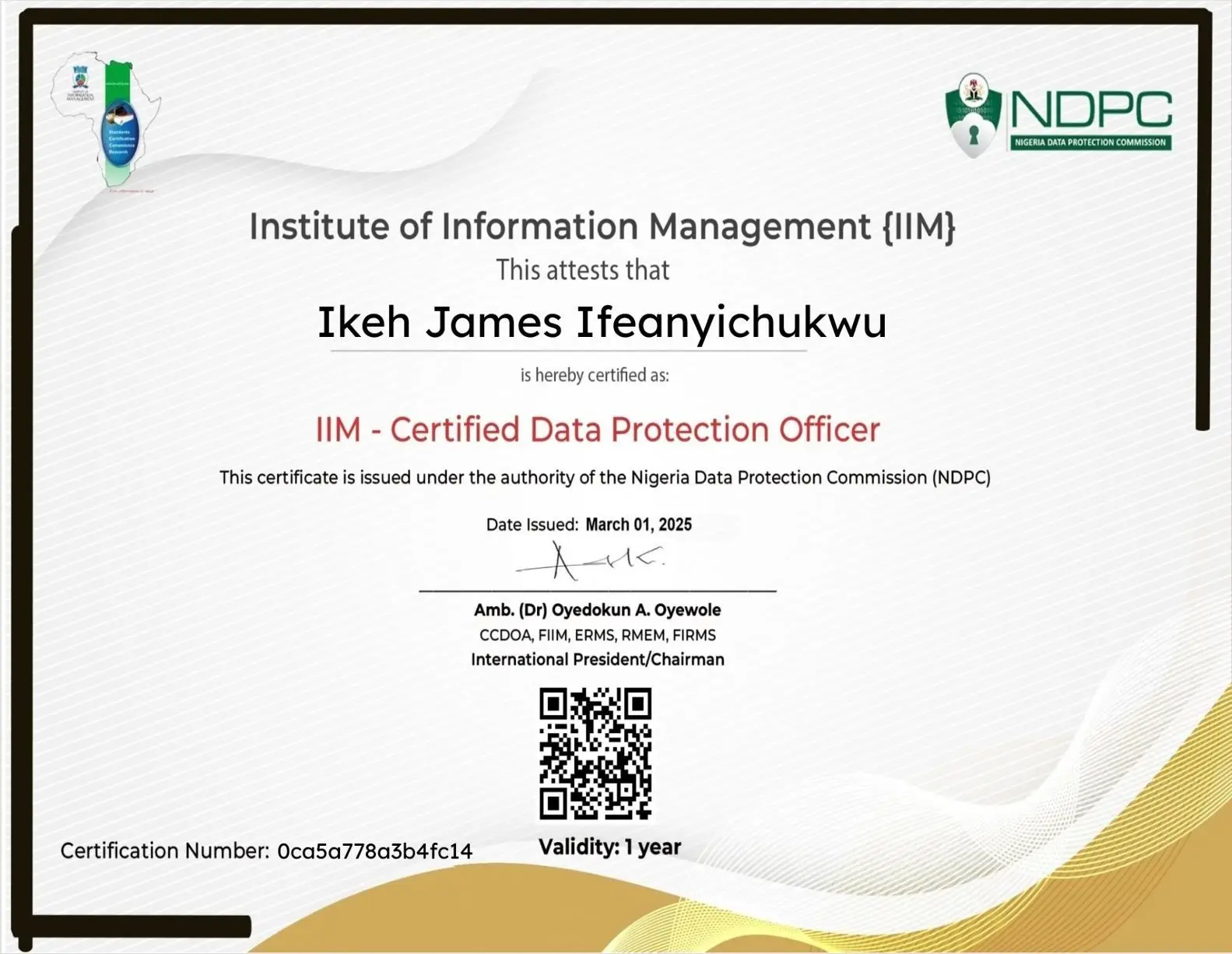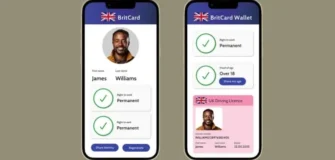Sensitive Data Explained: Why It Deserves Stronger Protection
Share

In today’s data-driven world, your personal information is currency—and hackers know it. But not all data is created equal. Some types of information are so private and potentially damaging if exposed that they deserve extra layers of protection.
This type of information is known as Sensitive Personal Data (SPD)—and in 2026, it’s at the center of privacy laws, cybersecurity frameworks, and global compliance requirements.
If organizations fail to protect it, the consequences go far beyond fines—they risk loss of trust, reputational damage, and even criminal penalties.
This article explains what Sensitive Personal Data is, why it matters, how it’s treated under laws like Nigeria’s NDPA, the EU’s GDPR, and the US Privacy Acts, and what you can do to safeguard it.
What Is Sensitive Personal Data?
Sensitive Personal Data (SPD) refers to information that reveals a person’s private, intimate, or potentially discriminatory details—data that, if mishandled, could lead to identity theft, profiling, or harm.
Definition Example:
Under Nigeria’s Data Protection Act (NDPA) 2023, SPD includes:
“Personal data relating to an individual’s race, ethnic origin, political opinions, religious beliefs, sexual orientation, trade union membership, health status, genetic or biometric data.”
In short, Sensitive Personal Data = deeply personal details that require heightened care and consent before collection or processing.
Examples of Sensitive Personal Data
| Category | Examples | Risk if Compromised |
|---|---|---|
| Health Data | Medical records, mental health history, prescriptions | Medical fraud, discrimination |
| Biometric Data | Fingerprints, facial recognition, voice patterns | Identity theft, surveillance |
| Financial Data | Bank statements, credit card info | Fraud, extortion |
| Genetic Data | DNA information, ancestry reports | Privacy invasion, misuse in insurance/employment |
| Religious or Political Beliefs | Faith, party membership | Harassment, targeted misinformation |
| Sexual Orientation | Gender identity, preferences | Outing, discrimination, blackmail |
Each of these categories poses unique ethical and legal risks, making protection measures non-negotiable.
Sensitive vs. Non-Sensitive Data
| Type | Description | Example | Protection Level |
|---|---|---|---|
| Non-Sensitive Data | Basic identifiers | Name, job title, email | Standard data protection |
| Sensitive Personal Data | Data revealing personal traits or beliefs | Religion, biometrics, health | Stronger encryption and consent required |
Why Sensitive Data Deserves Stronger Protection
1. It’s Targeted by Cybercriminals
Hackers value SPD because it can’t easily be changed—unlike passwords, you can’t “reset” your fingerprints or DNA.
2. It Can Cause Real-World Harm
Leaked medical or political data can lead to discrimination, harassment, or social stigma.
3. It’s Legally Protected by Global Regulations
Laws like GDPR, NDPA, and CCPA mandate explicit consent and strict processing conditions for SPD. Violations attract heavy penalties.
4. AI and Big Data Are Increasing Risks
As AI systems train on vast datasets, there’s a risk of sensitive information being exposed, shared, or inferred without consent.
How Privacy Laws Protect Sensitive Personal Data
| Law / Regulation | Region | Key SPD Protections |
|---|---|---|
| NDPA (Nigeria) | Nigeria | Requires Data Protection Impact Assessment (DPIA) for sensitive data; consent must be explicit. |
| GDPR (EU) | Europe | Article 9 prohibits processing of SPD unless under strict conditions (e.g. vital interest, consent). |
| CCPA (US) | California | Classifies certain biometric and health data as “sensitive”; mandates disclosure and opt-out. |
| HIPAA (US) | Healthcare sector | Governs protection of medical and health-related data. |
| UK DPA 2018 | United Kingdom | Mirrors GDPR with additional safeguards for criminal data. |
In 2026, these frameworks are expanding—especially around biometric and genetic data, as governments tighten compliance standards.
Best Practices for Protecting Sensitive Personal Data
1. Obtain Explicit Consent
Users must clearly agree before any sensitive data is collected or processed.
- Use plain language consent forms.
- Allow users to withdraw consent easily.
2. Conduct Data Protection Impact Assessments (DPIAs)
Assess how SPD is handled and identify potential risks before launching a new system or service.
3. Apply Encryption and Anonymization
- Encrypt SPD both in transit and at rest.
- Use anonymization or pseudonymization techniques to reduce exposure.
4. Implement Role-Based Access Control (RBAC)
Limit who can access sensitive records. Only authorized staff should view or modify SPD.
5. Use Secure Data Storage Solutions
Choose cloud providers that comply with ISO 27001 and SOC 2 Type II security certifications.
6. Limit Data Collection and Retention
Only collect what’s necessary and delete it when no longer needed.
7. Train Employees Regularly
Educate staff about SPD handling, phishing prevention, and reporting suspicious activity.
8. Adopt Privacy-Enhancing Technologies (PETs)
Use tools like differential privacy, homomorphic encryption, and secure multi-party computation to protect SPD even during processing.
Common Mistakes Organizations Make
- Collecting SPD without proper consent.
- Storing unencrypted sensitive data on shared servers.
- Allowing third parties access without strict contracts.
- Failing to delete old or redundant data.
- Ignoring new data protection updates in their region.
The Future of Sensitive Data Protection (2026 and Beyond)
| Trend | Description | Impact |
|---|---|---|
| AI-Driven Data Monitoring | Real-time tracking of SPD movement and usage. | Helps detect leaks faster. |
| Privacy-by-Design Frameworks | Embedding privacy at the architecture level. | Ensures compliance from the start. |
| Global Harmonization of Privacy Laws | Cross-border data frameworks emerging. | Simplifies compliance for multinationals. |
| Rise of Biometric Security | Fingerprints and facial recognition replacing passwords. | Raises new SPD storage concerns. |
Real-World Example
In 2025, a Nigerian fintech company faced regulatory penalties after it failed to secure customers’ biometric data used for onboarding. Following the breach, the NDPC mandated stronger encryption, explicit user consent, and third-party audits—setting a new compliance benchmark for 2026.
FAQs
Q1. Is all personal data sensitive?
No. Only data that can cause serious harm or discrimination if exposed is classified as sensitive.
Q2. Can sensitive data be processed without consent?
Only under specific lawful bases, such as vital interests, legal obligations, or substantial public interest—depending on the law.
Q3. What happens if a company mishandles SPD?
Penalties may include heavy fines, legal sanctions, and public blacklisting by data protection authorities.
Q4. What are the best encryption methods for SPD?
AES-256 and RSA-2048 are industry standards for securing sensitive information.
Q5. How can individuals protect their own SPD?
Avoid oversharing online, use strong passwords, enable MFA, and be cautious of free apps requesting unnecessary permissions.
Conclusion
Sensitive Personal Data is the digital DNA of your identity—and in 2026, protecting it is a moral, legal, and business imperative.
Organizations must treat SPD like gold: collect it sparingly, process it ethically, and secure it using the latest privacy technologies. The stronger the protection, the higher the trust—and in the privacy-first era, trust is everything.





































Leave a Reply